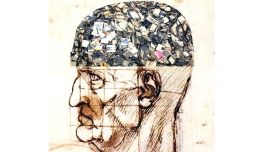Chile's Chinchorro mummies, the oldest in the world to have been purposefully preserved by humans, and a 2,300-year-old solar observatory in Peru were added to UNESCO's World Heritage List on Tuesday.
The mummies, which were found in the north of Chile at the start of the 20th century, are more than 7,000 years old, meaning they pre-date the Egyptian mummies by two millennia.
The Chankillo observatory in Peru, a structure of 13 stone towers built atop a hill and used as a calendar, was also added to the list at the 44th session of the World Heritage Committee, held online and chaired from Fuzhou in China.
Chilean mummies
The United Nations' cultural organisation announced on Twitter that it had added the "settlement and artificial mummification of the Chinchorro culture" to its prestigious list during a virtual meeting chaired by China.
"UNESCO is validating on an international level, through different experts, that the settlements and artificial mummification of the Chinchorro culture has exceptional value, that it has a global importance," Chilean anthropologist Bernardo Arriaza told AFP.
The Chinchorro were fishers and hunter gatherers more than 7,000 years ago in an area where the desert and Pacific Ocean meet in what is today the south of Peru and north of Chile.
So far, more than 300 mummies have been found, including red, black and bandaged ones.
The mummification process consisted of removing the organs, intestines and tissue. The skin was then ripped off the corpse and the body rebuilt using sticks and animal hair, while a thick head of black hair was sewn onto the scalp. Finally the mummies were painted red or black using earth, pigments, manganese and iron oxide.
"These bodies are very finely made by specialists. There's a subtlety, a creativity by these first populations," added Arriaza, who is the director of the Chinchorro Center at the Tarapaca University in the city of Arica.
Why the Chichorro culture mummified their dead remains a mystery.
In 2005, Arriaza developed a theory that it could have been linked to high levels of arsenic poisoning in the water that could have produced premature births, miscarriages, underweight children and high infant mortality.
He suggested the mummification was "an emotional response from parents faced with these painful losses, so they painted them, dressed them up and every day this technique became more elaborate."
Peruvian observatory
The Chankillo observatory, built by an ancient civilisation about two millennia before the ascent of another well-known Sun cult – the Inca empire – allowed for remarkably accurate astronomical observations, according to recent studies.
The walled, hilltop ruins some 400 kilometres (250 miles) north of Lima had long puzzled scientists.
Then in 2007, a study in the journal Science proposed the sequence of towers erected between 200 and 300 BC "marked the summer and winter solstices" and that Chankillo "was in part a solar observatory."
Peruvian archaeologist Iván Ghezzi, who co-authored that study with British colleague Clive Ruggles, told AFP the towers, erected "with great precision," were placed to mark different positions of the Sun "and therefore mark exact dates."
Their purpose was to time with astonishing accuracy the months, solstices and equinoxes – the planting and harvesting seasons and religious holidays.
The structure works like a giant clock, marking the passage of time over the span of a year.
"Chankillo is a masterpiece of ancient Peruvians. A masterpiece of architecture, a masterpiece of technology and astronomy. It is the cradle of astronomy in America," Ghezzi told AFP on a visit to the site.
It was also likely a place of Sun worship.
Sites to the east and west of the towers feature the remains of objects used for ritual sacrifices.
The observatory and its ceremonial appendages were protected by fortress walls made of stone, mud and tree trunks.
The complex spans some 5,000 hectares, but only about one percent has been studied, said Ghezzi.
Last year, the coronavirus epidemic paralyzed archaeological excavations in Peru, as elsewhere, and abandoned many sites containing priceless pre-Columbian objects to the mercy of looters, who sell to the black market.
Chankillo was among the sites invaded; not by thieves but by nearby farmers who have long looked to expand their land and who capitalized on the lack of control to plant crops within the borders of the site.
Peru has 12 other sites on the UNESCO World Heritage list, including the Inca citadel of Machu Picchu.
Chankillo was added to the list at the 44th session of the World Heritage Committee, held online and chaired from Fuzhou in China.
It added four more sites in Latin America, including a tropical garden "living work of art" developed by landscape architect Roberto Burle Marx in Brazil, a modernistic church complex by engineer Eladio Dieste in Uruguay, the Chinchorro mummies of Chile and Mexico's Tlaxcala cathedral.





















Comments